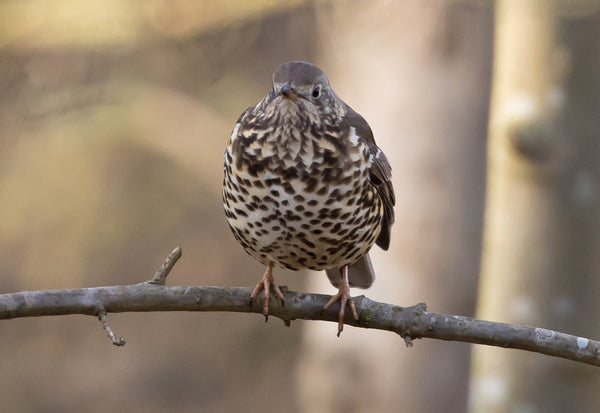
Song Thrush: Identification, Habitat, and Feeding Tips
Share
The Song Thrush (Turdus philomelos) can be seen all year round and is quite easy to identify as it is slightly smaller than the Mistle Thrush. It has even brown upperparts and buff underparts spotted brown and its underwing colour is pale yellowish-brown. Its distinctive song, which has repeated musical phrases, has frequently been referred to in poetry.
The Song Thrush breeds in forests, gardens and parks and many years ago it was perhaps the most common of the thrushes we could expect to see in our gardens. The Song Thrush is known to fly low, below tree top height from bush to bush and it often feeds under or close to cover.
Its diet includes worms, insects, berries and snails, and it is not unusual to witness the bird breaking a snail’s shell by bashing it against a stone. They will also take hedgerow fruits, berries and rose hips, and occasionally pick up the odd seed if it's soft in texture - a sunflower hearts would be a most welcome offering when fed on the ground as would almost all of our soft foods.
During the harsh weather in the winter season, they may be attracted more often to our gardens and will take food from garden feeders, bird tables but mostly from ground feeders.
Our New Help to Fly! Peck ‘n’ Mix seasonal special is bursting with so much bird seed variety and goodness that birds are literally spoilt for choice. With Peck 'n' Mix birds are spoilt for choice: will they peck at the fruit pellets first or smuggle a sunflower heart or two? Like kids in a sweet shop, they may try a little of everything: rowan berries; juicy raisins; golden cut maize - all gently tossed in vegetable oil with a hint of natural garlic and chilli to add extra health benefits to the winter pellets, and not forgetting the occasional dry mealworm to deliver much-needed protein in preparation for the spring breeding season.

Song Thrush numbers have sadly declined rapidly in recent years putting them on the Red List. It's, therefore, important that we continue to keep feeding stations clean and hygienic and filled with nutritious high-quality bird food offerings - from Haith's of course!
Written by Tina Jakes
